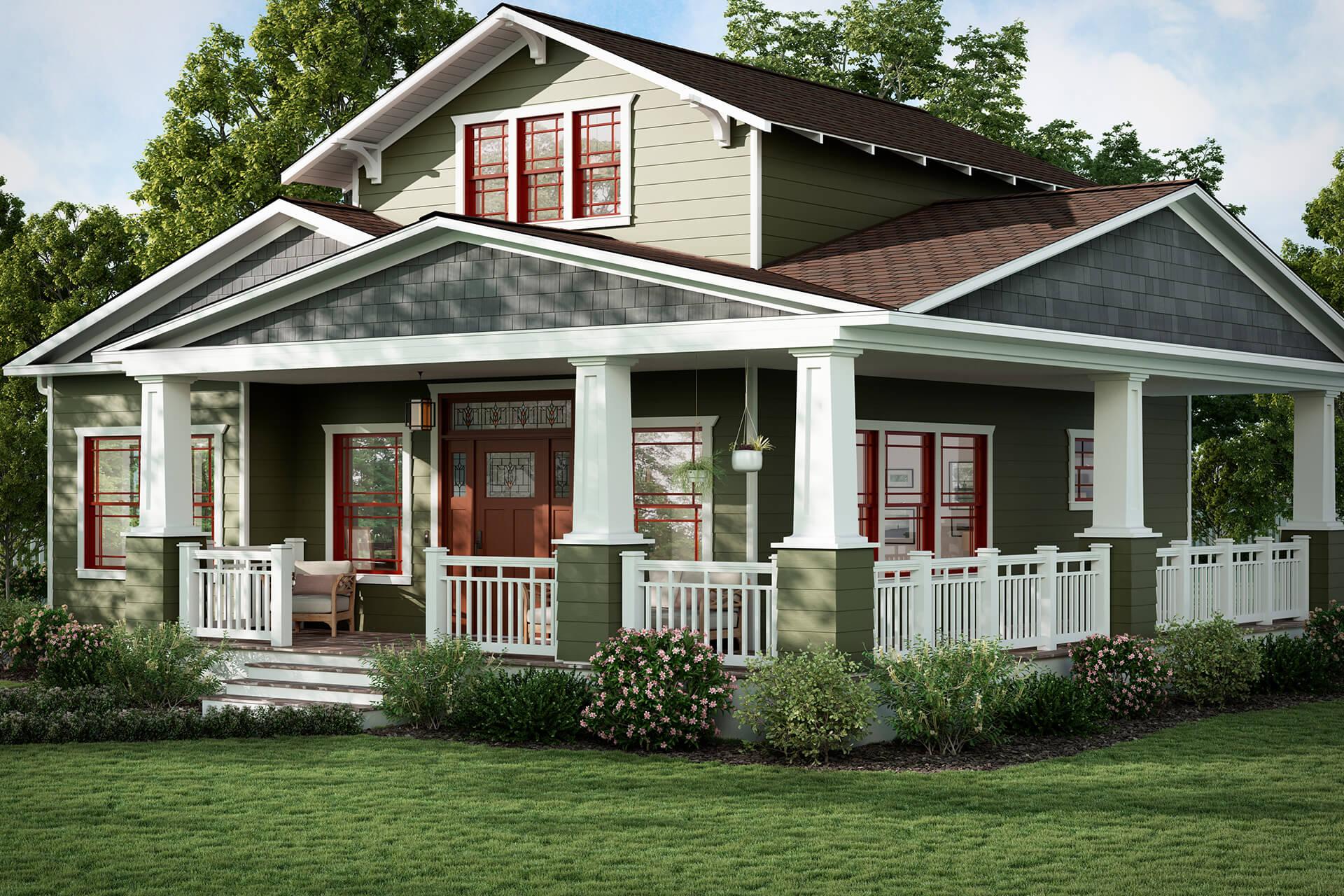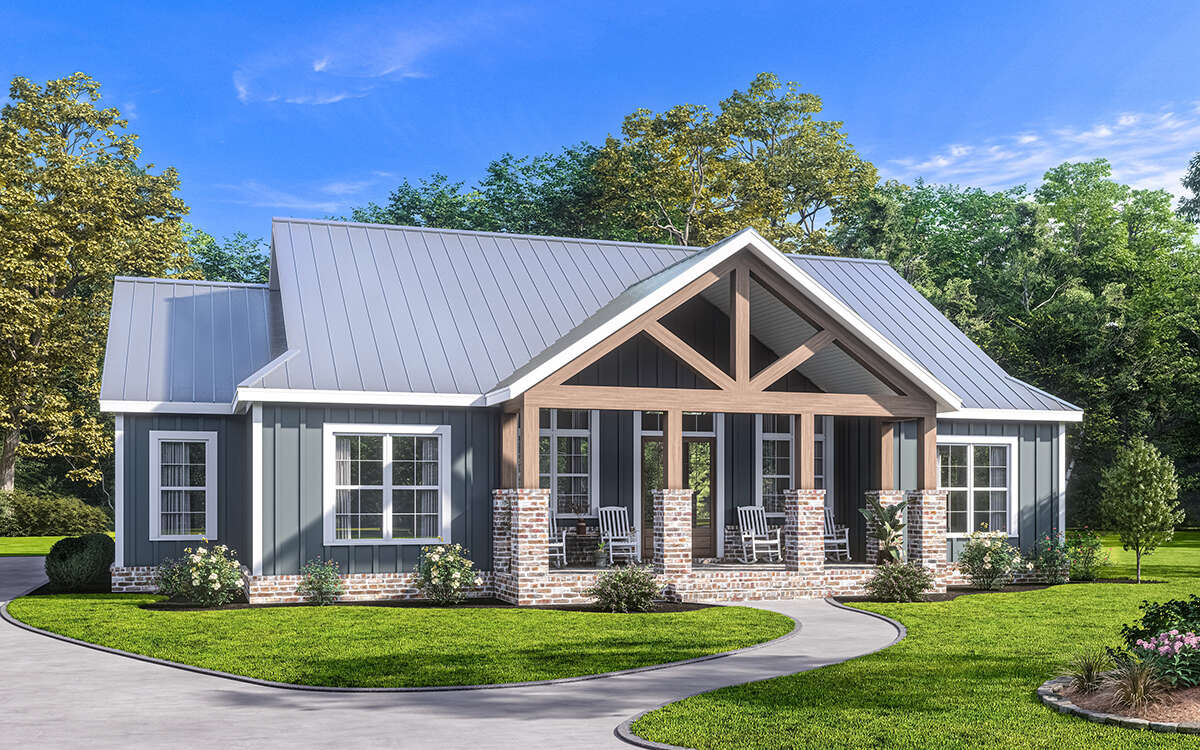The Role of Arts & & Crafts Architects in Elevating Architectural Services in Residential Style
Arts and Crafts architects considerably influence domestic style via their commitment to craftsmanship and sustainability. They focus on handcrafted details and all-natural products, which boost both aesthetic appeals and neighborhood identity. By entailing clients in the design process, these architects create distinct home that resonate with individual tastes. This approach questions regarding the future trajectory of domestic architecture and its prospective effect on area characteristics. craftsman style house. What lies ahead for this ageless style approach?

The Principles of Arts and Crafts Architecture
The essence of Arts and Crafts architecture hinges on its commitment to craftsmanship and simplicity. This architectural motion emerged in the late 19th century as an action to automation, stressing the worth of handmade details and natural products. The concepts of Arts and Crafts architecture focus on capability and consistency with the atmosphere. Structures normally include low-pitched roofings, broad eaves, and subjected rafters, promoting a feeling of unity with nature.
Artisans played a considerable function in this style, frequently integrating attractive components like tarnished glass, ceramic tiles, and woodwork, which reflect local craftsmanship. The color combination often tends to be natural and subdued, allowing structures to mix perfectly into their environments. Furthermore, the design encourages open flooring strategies and common rooms, cultivating a feeling of togetherness. On the whole, the principles of Arts and Crafts architecture commemorate the elegance of simpleness and the relevance of human link to both nature and area.
:strip_icc()/gray-brick-house-white-trim-sidewalk-844346c3-f247216f376b4a2c908a39fffb5ae634.jpg)
Sustainable Practices in Residential Layout
While the need for eco liable living remains to expand, lasting practices in household design have gained significant grip among architects and house owners alike. Architects are progressively integrating energy-efficient innovations and sustainable products right into their styles, intending to reduce carbon impacts and enhance power conservation. Techniques such as passive solar design, green roofs, and rain harvesting systems are ending up being basic parts of contemporary domestic architecture.
Furthermore, the selection of in your area sourced materials reduces transportation discharges and sustains regional economic situations. Emphasis on all-natural light and ventilation not only improves indoor air high quality yet also lowers dependence on synthetic lights and environment control systems. These sustainable practices reflect a commitment to maintaining the atmosphere while giving homeowners with comfortable, effective space. As awareness of environmental problems grows, the combination of sustainability in residential design is poised to end up being a specifying feature of modern architecture, guided by the principles developed by Arts and Crafts architects.
Personalization and Customization in Home Design
Personalization and customization in home layout have actually arised as essential trends in feedback to the expanding need for unique living settings that reflect individual preferences and lifestyles. Property owners progressively look for to tailor areas that resonate with their personal identities, leading to a more meaningful connection with their home. craftsman style house. This movement encourages architects to engage customers in the layout procedure, promoting partnership that guarantees the last end result symbolizes the home owner's vision
Aspects such as bespoke designs, customized Learn More materials, and customized coatings permit a diverse range of expressions in domestic style. Arts and Crafts architects play an essential duty in check my blog this advancement, highlighting craftsmanship and top quality. Their concentrate on integrating imaginative aspects with performance guarantees that each home is not just aesthetically pleasing but additionally uniquely matched to the occupants' requirements. Consequently, this focus on personalization enhances the overall residential experience, developing areas that are both personal and long-lasting.

The Effect of Arts and Crafts Architects on Neighborhood Looks
As neighborhoods progress, the impact of Arts and Crafts architects greatly forms their visual landscape. By stressing handmade information, natural materials, and typical construction methods, these architects create homes that reverberate with their environments. Their styles commonly incorporate neighborhood flora, appearances, and shades, promoting a feeling of harmony in between developed environments and nature.
In addition, the Arts and Crafts motion advertises neighborhood identification with building continuity. By urging property owners to adopt similar layout concepts, communities develop a natural personality that improves visual allure. This building uniformity not only improves the visual experience however also instills a feeling of satisfaction among residents.
The emphasis on sustainability and workmanship in Arts and Crafts architecture aligns with modern-day values, making these styles pertinent in modern setups. Ultimately, Arts and Crafts architects contribute considerably to the general charm and social honesty of areas, leaving a long lasting why not try here effect on their visual legacy.

Future Trends in Arts and Crafts Architecture
With a boosting focus on sustainability and customization, future patterns in Arts and Crafts architecture are positioned to mix typical workmanship with modern-day technology - craftsman style house. Architects are most likely to focus on green products, using recovered wood and natural rock to improve the sustainability of property styles. The assimilation of wise home innovation will end up being commonplace, permitting individualized living experiences without compromising aesthetic honesty
In addition, the rebirth of artisanal methods will cultivate a restored recognition for handcrafted components, such as bespoke cabinets and customized tile job. Future styles may likewise reflect a focus on community-oriented spaces, motivating interaction and link among homeowners. Outside living locations will obtain prominence, seamlessly incorporating nature right into the home atmosphere. As Arts and Crafts architecture develops, it will continue to honor its origins while adjusting to contemporary needs, creating unified rooms that show private values and lifestyles.
Frequently Asked Inquiries
What Influenced the Arts and Crafts Motion in Architecture?
The Arts and Crafts movement in architecture was motivated by a response against industrialization, emphasizing handmade high quality, natural products, and a go back to conventional craftsmanship, intending to produce harmonious, functional rooms that commemorated artistry and individuality.
Just how Do Arts and Crafts Architects Collaborate With Clients?
Arts and crafts architects collaborate with customers through open dialogue, prioritizing individual demands and looks. They stress craftsmanship and sustainability, fostering a collaboration that integrates the client's vision with the architect's expertise in layout and materials.
What Materials Are Typically Utilized in Arts and Crafts Homes?
Usual products in Arts and Crafts homes include natural wood, rock, and block, highlighting workmanship and natural visual appeals. These aspects produce a warm, inviting environment, showing the activity's devotion to quality and simplicity in layout.
Just how Do Arts and Crafts Layouts Boost Indoor Living Areas?
Arts and Crafts styles improve indoor space by promoting natural light, open flooring plans, and handcrafted details. These elements foster a warm, welcoming ambience, encouraging a connection between locals and their environments through thoughtful, useful visual appeals.
What Are Some Famous Examples of Arts and Crafts Architecture?
Famous instances of Arts and Crafts architecture consist of the Gamble House, Greene and Greene's work of art in The golden state, and the Robie House by Frank Lloyd Wright. These structures display handcrafted details and harmony with nature, specifying the activity's essence.